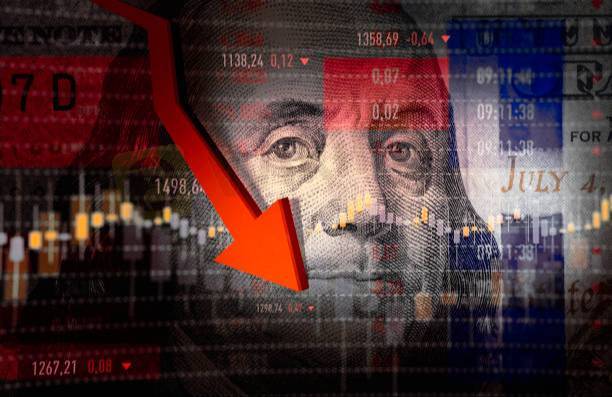
2025-02-17 18:37
業界Financial Market Bubbles and Crashes
#firstdealofthenewyearastylz
Financial Market Bubbles and Crashes
Financial market bubbles and crashes are extreme fluctuations in asset prices, where values surge well beyond their fundamental worth before collapsing suddenly. These events are often fueled by speculation, investor sentiment, and broader market forces rather than actual economic fundamentals.
Understanding Market Bubbles
A bubble forms when asset prices increase rapidly due to excessive speculation, often influenced by:
Overconfidence: Investors assume prices will continue rising indefinitely.
Easy access to credit: Low interest rates and lenient lending encourage risky investments.
Crowd mentality: Investors follow trends without assessing underlying value.
Emerging industries: New markets, such as tech or cryptocurrency, attract speculative interest.
What Causes Market Crashes?
A market crash is a sudden and severe drop in asset prices, usually following a bubble burst. Key triggers include:
Mass panic selling: Investors offload assets quickly to avoid further losses.
Economic downturns: Weak economic indicators erode investor confidence.
Regulatory shifts: Policy changes can disrupt market conditions.
External events: Financial crises, wars, or pandemics can cause widespread sell-offs.
Notable Historical Examples
Tulip Mania (1637): Dutch tulip prices soared before dramatically collapsing.
South Sea Bubble (1720): Excessive speculation in the South Sea Company led to financial disaster.
1929 Stock Market Crash: Overvaluation and speculation triggered the Great Depression.
Dot-com Bubble (1999-2000): Unjustified enthusiasm for internet companies resulted in a massive sell-off.
2008 Global Financial Crisis: Housing market speculation and risky financial products caused an economic meltdown.
Key Takeaways
Diversification minimizes risk: A balanced portfolio helps withstand market volatility.
Fundamentals matter: Investing based on real value reduces exposure to speculative bubbles.
Market cycles are inevitable: Studying past crises can help identify warning signs.
いいね 0

Olywhtye
FX会社一覧
人気の話題
業界
米国株式や日経などのクロスボーダー ETF は大量に高値で償還され
業界
包括的なリスク管理計画を策定する
業界
高度なテクノロジーとテクニカル分析を活用する
業界
📢2025年1月9日11:00の通貨ペア
業界
危険】:米国でVarna Tradeを訪問しましたが、オフィスは見つかりませんでした‼ 詳細は下の画
業界
👀#WikiFX 「先週、日本人ユーザーが最も検索されたFX会社が発表されました!」
市場分類

会社ナビ

エキスポ

IB

募集

EA

業界

相場

指標
Financial Market Bubbles and Crashes
 香港 | 2025-02-17 18:37
香港 | 2025-02-17 18:37#firstdealofthenewyearastylz
Financial Market Bubbles and Crashes
Financial market bubbles and crashes are extreme fluctuations in asset prices, where values surge well beyond their fundamental worth before collapsing suddenly. These events are often fueled by speculation, investor sentiment, and broader market forces rather than actual economic fundamentals.
Understanding Market Bubbles
A bubble forms when asset prices increase rapidly due to excessive speculation, often influenced by:
Overconfidence: Investors assume prices will continue rising indefinitely.
Easy access to credit: Low interest rates and lenient lending encourage risky investments.
Crowd mentality: Investors follow trends without assessing underlying value.
Emerging industries: New markets, such as tech or cryptocurrency, attract speculative interest.
What Causes Market Crashes?
A market crash is a sudden and severe drop in asset prices, usually following a bubble burst. Key triggers include:
Mass panic selling: Investors offload assets quickly to avoid further losses.
Economic downturns: Weak economic indicators erode investor confidence.
Regulatory shifts: Policy changes can disrupt market conditions.
External events: Financial crises, wars, or pandemics can cause widespread sell-offs.
Notable Historical Examples
Tulip Mania (1637): Dutch tulip prices soared before dramatically collapsing.
South Sea Bubble (1720): Excessive speculation in the South Sea Company led to financial disaster.
1929 Stock Market Crash: Overvaluation and speculation triggered the Great Depression.
Dot-com Bubble (1999-2000): Unjustified enthusiasm for internet companies resulted in a massive sell-off.
2008 Global Financial Crisis: Housing market speculation and risky financial products caused an economic meltdown.
Key Takeaways
Diversification minimizes risk: A balanced portfolio helps withstand market volatility.
Fundamentals matter: Investing based on real value reduces exposure to speculative bubbles.
Market cycles are inevitable: Studying past crises can help identify warning signs.
いいね 0
私もコメントします
質問します
0コメント件数

誰もまだコメントしていません、すぐにコメントします

質問します
誰もまだコメントしていません、すぐにコメントします